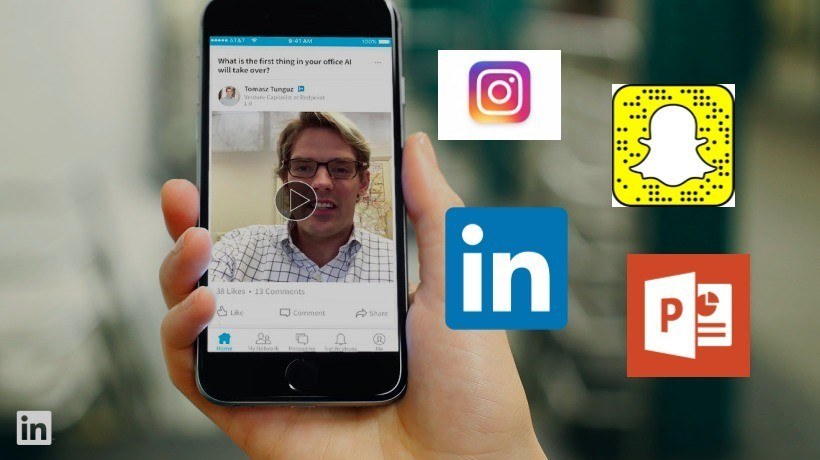Why You Need To Embrace Video Learning And Stop Fighting Your Employees’ Love For Videos
Digital natives will take over the workforce before we know it. And with this new wave of workers will come widespread organizational change. We're already experiencing generational impacts on learning programs and technologies, workplace cultures – you name it. Companies need to be prepared to embrace change, especially when it comes to altering perceptions of video consumption at work. Instead of seeing video as a time waster, let's talk about embracing video for learning.
As is the case with any age group, learning styles vary greatly. But it is notable that many Millennials and digital-era workers prefer video learning to print. Why? Well, video is simple to access and view on mobile devices. In addition, videos teach concepts in a short amount of time, and are easy to share with colleagues. Sharing video and exchanging feedback about the concepts covered more closely connects employees with the content, the content providers and their networks. Some might say this is social learning at its finest. With the benefits that accompany video learning, why is video consumption still frowned upon in the workplace?
Video Learning, Overcoming Its Challenges?
Video consumption in general comes with its fair share of challenges. Audio can be disruptive in open work spaces, and today, it remains difficult to know if an employee is really engaged in a learning video, or simply wasting time – the latter of which causes the most concern when it comes to productivity.
In early 2013, J.C. Penney discovered that 4,800 workers at its headquarters in Plano, Texas, watched five million online videos in a month while working (according to the Wall Street Journal). This took up more than 30% of the headquarters’ bandwidth. A big issue? Yes, since the videos were not related to job functions, or being consumed for learning purposes. But, the amount of time spent watching video sure was a good indicator that employees had a strong preference for visual content. Rather than capturing an opportunity to engage employees – who were said to be “cyberloafing” – and provide new opportunities through video, J.C. Penney laid off 1,500 workers. The culture was deemed “pathetic” by its former CEO Ron Johnson.
Of course, wasting time watching cat videos on YouTube deserves repercussions. However, organizations that notice video watching tendencies –even if outside of training purposes– should take advantage of the employee preference for video and weave it into learning discussions and opportunities for employee advocacy.
Finding Balance: 7 Ways to Embrace Video Learning
Companies seeking a competitive edge with video content (aimed at learning and employee engagement) will need to find a good balance between ensuring that employees are productive and engaged, without wasting valuable company time.
Here are 7 ways to do this:
- Seek vetted content, from multiple content providers, that includes short lessons and build on concepts in a progression. Sequencing allows the learner to practice what they’ve learned, in a bite-sized manner.
- Provide content that you would want your employees to share as part of an employee advocacy activity, or through collaborative learning. Organizations can benefit from empowering employees to share content with external networks. Sharing content paired with an employee’s interpretations can help build your brand, as well as give employees a fresh taste of leadership development.
- Pair content delivery with collaborative tools or events that provide interaction, so that viewers can share and discuss ideas that resonate with them. Interactions with peers and experts can help connect viewers to content in a more meaningful way.
- Meet your employees where they are by providing contextual, “just in time” video learning opportunities in the workplace, available as kiosks or pop-ups. Or, provide and suggest video learning content that is relevant and aligned to a role, task or process. Guide learning in a way that benefits employees without taking up too much company time.
- Choose content with real world examples. Connect the learning to the outcome, and answer the “what’s in it for me?” question. Helping your employees realize individual benefits of learning will likely motivate them to keep raising the bar.
- When possible, help learners connect to content with humor, visuals, emotion and empathy. Strengthen connections by providing additional opportunities for content interaction in groups.
- Support employees in using, sharing, and pacing video content on workplace platforms by providing options to “bookmark”, or allowing the learner to self-pace and resume learning when convenient for them. Look for video content that is also rich in text and visuals outside of audio, and provide dedicated “noise” areas or headphones for employees when the situation allows.
The Documented Appeal of Video
Liraz Margalit, Ph.D., wrote in a Psychology Today blog post that video can be a powerful way to quickly educate and speak to both employees and consumers because it is more “shareable” than other digital media. Margalit mentions that consumers are 39% more likely to share content if it’s delivered via video, 36% more likely to comment, and 56% more likely to give that video a coveted “like”.
In addition, Margalit notes that most people also learn much faster while watching video, pointing to research that shows that our brains process video information up to 60,000 times faster than reading. She adds that the human tendency is to choose information that is easy to consume.
Based on Margalit’s (and many others’) research on the positive effects of video, and digital-aged employees’ video learning and collaboration preferences, it's easy to see a clear future for video-based collaborative learning in the workplace. And since Learning and Development professionals often talk about making learning like any other part of an employee’s day and workflow, integrating video content that supports clear objectives achieves learning professionals’ goals, and plays to the learning preferences of young talent. It’s a win win for both sides and a step in the direction toward video efficiency, rather than video consumption being seen as a detriment.









